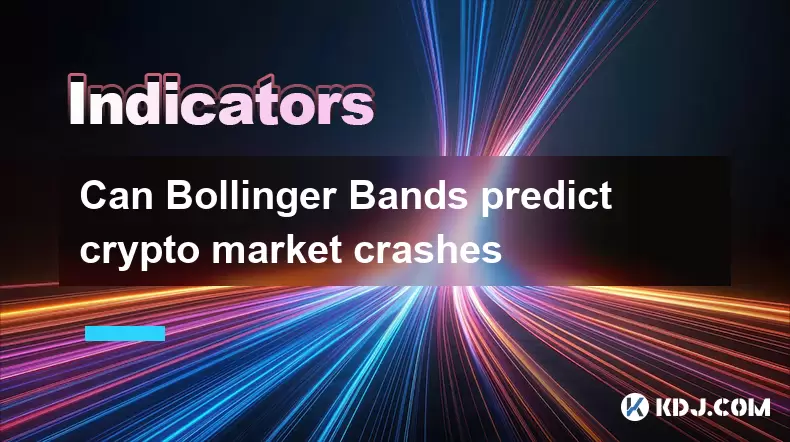-
 Bitcoin
Bitcoin $118100
-0.44% -
 Ethereum
Ethereum $3585
5.43% -
 XRP
XRP $3.434
5.65% -
 Tether USDt
Tether USDt $1.000
0.02% -
 BNB
BNB $743.8
3.89% -
 Solana
Solana $178.7
3.84% -
 USDC
USDC $1.000
0.03% -
 Dogecoin
Dogecoin $0.2381
12.81% -
 TRON
TRON $0.3270
3.62% -
 Cardano
Cardano $0.8315
4.93% -
 Hyperliquid
Hyperliquid $44.51
-4.42% -
 Stellar
Stellar $0.4710
1.52% -
 Sui
Sui $3.896
-2.51% -
 Chainlink
Chainlink $18.09
6.98% -
 Hedera
Hedera $0.2681
9.31% -
 Bitcoin Cash
Bitcoin Cash $516.7
4.83% -
 Avalanche
Avalanche $23.95
6.96% -
 Shiba Inu
Shiba Inu $0.00001490
5.67% -
 UNUS SED LEO
UNUS SED LEO $8.966
0.80% -
 Toncoin
Toncoin $3.294
4.39% -
 Litecoin
Litecoin $105.4
4.69% -
 Polkadot
Polkadot $4.356
5.30% -
 Uniswap
Uniswap $10.29
17.25% -
 Monero
Monero $327.9
-3.04% -
 Bitget Token
Bitget Token $4.942
4.33% -
 Ethena USDe
Ethena USDe $1.001
0.08% -
 Pepe
Pepe $0.00001348
2.17% -
 Dai
Dai $1.000
0.02% -
 Aave
Aave $320.8
0.58% -
 Bittensor
Bittensor $411.8
-4.07%
Can Bollinger Bands predict crypto market crashes
Bollinger Bands help crypto traders spot volatility and potential price reversals, but they can't predict market crashes on their own.
Jul 16, 2025 at 04:56 pm

Understanding Bollinger Bands in Cryptocurrency Trading
Bollinger Bands are a popular technical analysis tool developed by John Bollinger in the 1980s. They consist of three lines: a simple moving average (SMA) in the middle, with an upper and lower band calculated using standard deviations. These bands expand and contract based on market volatility.
In the context of cryptocurrency trading, where price swings can be extreme, Bollinger Bands help traders identify overbought or oversold conditions. When prices approach the upper band, it may signal that the asset is overbought, while touching the lower band could suggest it’s oversold. However, these signals do not necessarily indicate a crash—they merely highlight potential reversal points.
How Bollinger Bands React During Market Crashes
During significant crypto market crashes, Bollinger Bands often exhibit distinct patterns. For example, when panic selling occurs, the price can plummet rapidly, breaking through the lower Bollinger Band. This phenomenon is known as a "Bollinger Band walk," where the price continues to move along the band rather than bouncing back.
Traders observe that during such periods, the bands themselves tend to widen due to increased volatility. The widening indicates heightened uncertainty in the market. However, it's crucial to understand that Bollinger Bands alone cannot predict crashes; they only reflect current market behavior. A breakout below the lower band might warn of continued downward momentum but does not guarantee a crash.
Limitations of Bollinger Bands in Predicting Crypto Crashes
While Bollinger Bands provide valuable insights into price volatility and trend strength, they have notable limitations in predicting market crashes:
- Lagging Indicator: Since Bollinger Bands rely on moving averages, they inherently lag behind current price action. By the time a signal appears, the market may have already moved significantly.
- False Signals: In highly volatile crypto markets, prices frequently touch or exceed the bands without leading to reversals. These false signals can mislead traders who rely solely on Bollinger Bands.
- No Fundamental Analysis: Bollinger Bands offer no insight into underlying fundamentals or macroeconomic factors that often drive major market downturns.
Therefore, using Bollinger Bands in isolation is risky when attempting to forecast large-scale market corrections or crashes.
Combining Bollinger Bands with Other Indicators
To enhance predictive accuracy, many traders combine Bollinger Bands with other technical indicators. Some commonly used complementary tools include:
- Relative Strength Index (RSI): Helps confirm whether the market is truly overbought or oversold.
- Volume Indicators: Increasing volume during a price drop can validate bearish momentum.
- Moving Average Convergence Divergence (MACD): Offers insights into trend changes and momentum shifts.
By analyzing multiple indicators together, traders can better assess whether a potential market crash is imminent. For instance, if the price touches the lower Bollinger Band, RSI drops below 30 (indicating oversold conditions), and MACD shows a bearish crossover, the probability of a continued downtrend increases.
Historical Examples of Bollinger Band Behavior During Major Crypto Crashes
Looking at historical data from major crypto market crashes, such as those in early 2018, late 2020, and mid-2022, we can observe consistent patterns in Bollinger Band behavior:
- Bitcoin’s March 2020 Crash: Prices fell sharply, consistently hugging the lower Bollinger Band for several days. However, this didn’t serve as a reliable prediction tool—it merely confirmed the ongoing sell-off.
- Ethereum’s May 2021 Correction: After reaching all-time highs, ETH saw rapid declines, again pushing prices below the lower band. Yet, recovery began before any clear reversal signal appeared on the bands.
- TerraUSD Collapse (May 2022): As UST depegged, LUNA’s price plummeted with extreme volatility. The Bollinger Bands widened dramatically but failed to provide timely warnings of the impending collapse.
These examples illustrate that while Bollinger Bands reflect volatility, they do not reliably forecast sudden or systemic market failures.
Frequently Asked Questions
Q: Can Bollinger Bands be used to time the market accurately?
A: No single indicator, including Bollinger Bands, can reliably time the market. They should be used alongside other tools and strategies for more informed decision-making.
Q: What does it mean when the price stays outside the Bollinger Bands?
A: Extended price movement beyond the bands suggests strong momentum, either bullish or bearish. It doesn't necessarily indicate a reversal or crash but highlights unusual market activity.
Q: Are Bollinger Bands effective across all cryptocurrencies?
A: While applicable to most assets, including altcoins and stablecoins, their effectiveness varies depending on liquidity and volatility. Highly illiquid tokens may produce misleading signals.
Q: How often should I adjust the settings of Bollinger Bands?
A: The default setting of a 20-period SMA and 2 standard deviations works well for most traders. Adjustments may be needed for specific strategies or timeframes but should be tested thoroughly before live trading.
Disclaimer:info@kdj.com
The information provided is not trading advice. kdj.com does not assume any responsibility for any investments made based on the information provided in this article. Cryptocurrencies are highly volatile and it is highly recommended that you invest with caution after thorough research!
If you believe that the content used on this website infringes your copyright, please contact us immediately (info@kdj.com) and we will delete it promptly.
- Coinbase (COIN) Soars to All-Time High: What's Next?
- 2025-07-19 00:30:12
- DOGE, BlockDAG, and Vesting: What's Hot and What's Not in Crypto Right Now
- 2025-07-19 01:10:14
- Crypto Coins with 2025 Potential: BlockDAG and SUI Lead the Charge
- 2025-07-19 01:15:12
- Grass Cutting Hacks: Finding the Right Height for a Lush Lawn
- 2025-07-19 00:30:12
- RWA Token Revolution: Stage Point Europe Leads Crypto Real Estate Launch in Europe
- 2025-07-19 00:50:13
- Token Unlocks and AVAIL: July's Crypto Cliffhangers!
- 2025-07-19 00:50:13
Related knowledge

Advanced RSI strategies for crypto
Jul 13,2025 at 11:01am
Understanding the Basics of RSI in Cryptocurrency TradingThe Relative Strength Index (RSI) is a momentum oscillator used to measure the speed and chan...

Crypto RSI for day trading
Jul 12,2025 at 11:14am
Understanding RSI in the Context of Cryptocurrency TradingThe Relative Strength Index (RSI) is a momentum oscillator used to measure the speed and cha...

Crypto RSI for scalping
Jul 12,2025 at 11:00pm
Understanding RSI in the Context of Crypto TradingThe Relative Strength Index (RSI) is a momentum oscillator widely used by traders to measure the spe...

What does an RSI of 30 mean in crypto
Jul 15,2025 at 07:07pm
Understanding RSI in Cryptocurrency TradingRelative Strength Index (RSI) is a momentum oscillator widely used in cryptocurrency trading to measure the...

What does an RSI of 70 mean in crypto
Jul 13,2025 at 06:07pm
Understanding the RSI Indicator in Cryptocurrency TradingThe Relative Strength Index (RSI) is a widely used technical analysis tool that helps traders...

Does RSI work in a bear market for crypto
Jul 16,2025 at 01:36pm
Understanding RSI in Cryptocurrency TradingThe Relative Strength Index (RSI) is a momentum oscillator used by traders to measure the speed and change ...

Advanced RSI strategies for crypto
Jul 13,2025 at 11:01am
Understanding the Basics of RSI in Cryptocurrency TradingThe Relative Strength Index (RSI) is a momentum oscillator used to measure the speed and chan...

Crypto RSI for day trading
Jul 12,2025 at 11:14am
Understanding RSI in the Context of Cryptocurrency TradingThe Relative Strength Index (RSI) is a momentum oscillator used to measure the speed and cha...

Crypto RSI for scalping
Jul 12,2025 at 11:00pm
Understanding RSI in the Context of Crypto TradingThe Relative Strength Index (RSI) is a momentum oscillator widely used by traders to measure the spe...

What does an RSI of 30 mean in crypto
Jul 15,2025 at 07:07pm
Understanding RSI in Cryptocurrency TradingRelative Strength Index (RSI) is a momentum oscillator widely used in cryptocurrency trading to measure the...

What does an RSI of 70 mean in crypto
Jul 13,2025 at 06:07pm
Understanding the RSI Indicator in Cryptocurrency TradingThe Relative Strength Index (RSI) is a widely used technical analysis tool that helps traders...

Does RSI work in a bear market for crypto
Jul 16,2025 at 01:36pm
Understanding RSI in Cryptocurrency TradingThe Relative Strength Index (RSI) is a momentum oscillator used by traders to measure the speed and change ...
See all articles

























































































